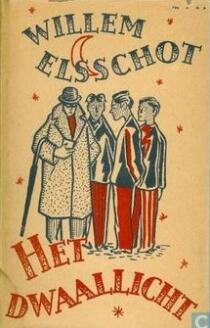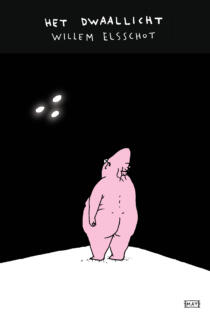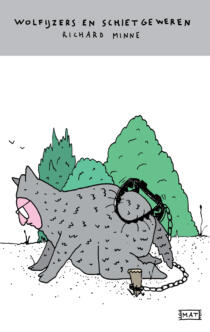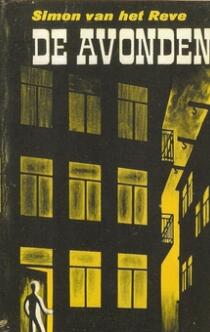Will o’ the Wisp is the final work in the concise, intriguing oeuvre of the still immensely popular Willem Elsschot. This novella is fifty pages long at most and yet it remains an inexhaustible source of inspiration. The story of a nocturnal search by the rather jaded Frans Laarmans and three Afghan sailors for the mysterious Maria Van Dam has been filmed, turned into a graphic novel, set to music and adapted for the theatre. In Antwerp, you can follow in Laarmans’ footsteps with a map in hand to Kloosterstraat 15, where he and the besotted sailors hoped to find Maria.
In the novella, Maria seems to be untraceable. The address that she gave the sailors turns out to be a false trail. The police are as unable to point Laarmans and his companions in the right direction as the seedy figures that cross their path.
Since the four searchers fail to find Maria, their quest assumes almost metaphysical dimensions. This impression is reinforced by the religious references that pepper the work. The first name of the elusive beauty (Mary) is already a clue, but Elsschot evokes the bible in more subtle ways too.
In a clever move, the Antwerp writer had Frans Laarmans of all people explain the Western and Christian world views to the Afghans. After all, Laarmans is not wildly enthusiastic about what the church and the state represent. This is why he staggers from one uncomfortable situation to the next, like a tragicomic figure. The more he struggles to dialogue with the Afghan sailors, the more delight Elsschot seems to experience in conceiving of these situations and conversations.
Today’s readers may be shocked by the way that the three Afghans are casually called “rice shitters” in Will o’ the Wisp. They are portrayed as slightly dumb “blacks” who do not want to believe that they have been fooled. Thankfully, much has changed since 1946 when the story was first published. But it is also striking how recognisable many of the situations in the novella remain. “Seamstresses” like Maria Van Dam may no longer work on sea-going vessels but the misunderstandings and prejudices with which “Ali Khan” and his companions are confronted are, sadly, not consigned to the past.
But Will o’ the Wisp is not a work of protest. It becomes increasingly clear that Laarmans is extremely alienated from his Western culture, religion and family, and the desires, hopes and fears of the three strangers from distant shores gradually become very recognisable to him. The growing friendship between Laarmans and the Afghan sailors is, therefore, heart-warming.
Will o’ the wisp is a short novella but all the elements that make Willem Elsschot an exceptional writer are to be found in this story. These elements can seem contradictory, but Elsschot was capable of uniting the incompatible in his work: dry and business-like as well as sensitive and poetic; inseparable from his city of birth and yet universal; and filled with sadness and melancholy but also comedy and irony.
Sometimes searching is better than finding.






